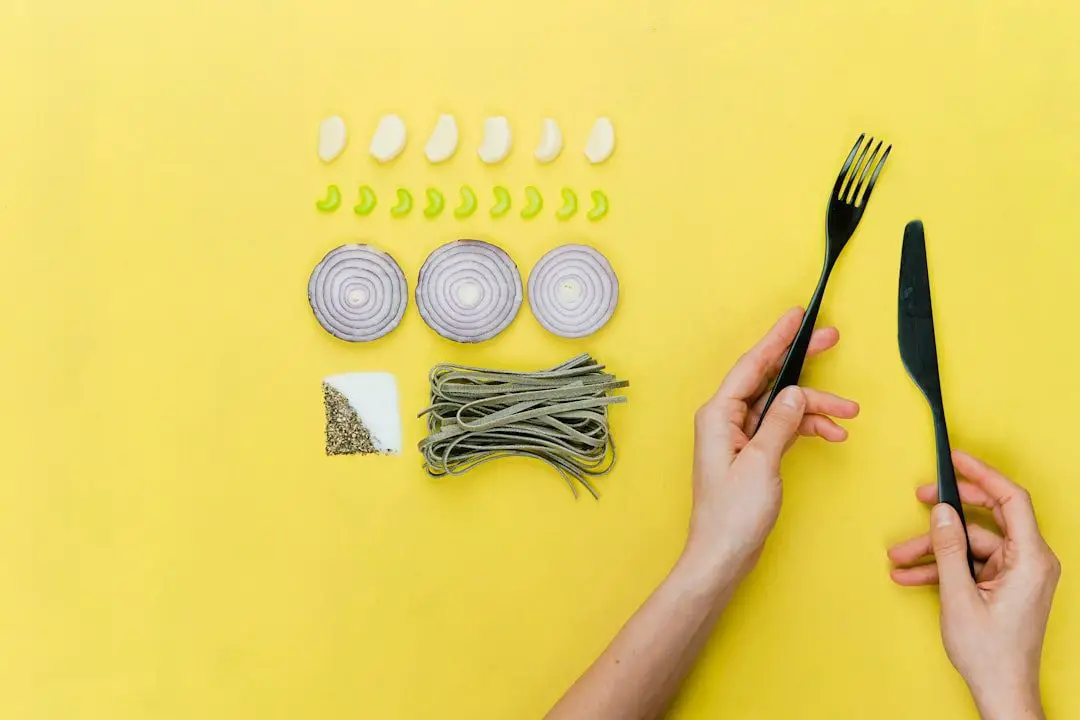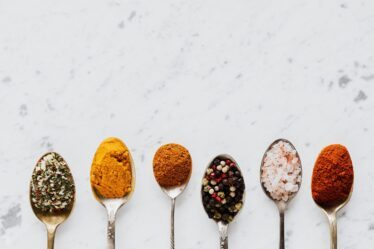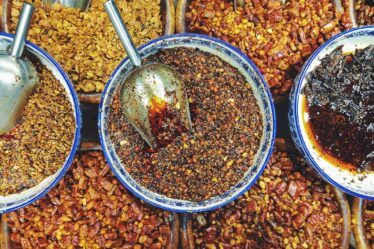
Allspice is a unique and versatile spice that adds a warm and complex flavor to a wide range of dishes. It is often described as having a combination of flavors, including hints of cinnamon, nutmeg, and cloves. In this article, we will explore the origins and uses of allspice in cooking, its cultural significance, health benefits, proper storage and usage, as well as its role in international cuisine, holiday baking, and homemade spice blends.
Key Takeaways
- Allspice is a spice made from the dried berries of the Pimenta dioica plant and is commonly used in cooking.
- Allspice has a long history and cultural significance, particularly in Jamaican cuisine and as a key ingredient in holiday baking.
- Allspice has health benefits, including anti-inflammatory and antioxidant properties.
- To properly store and use allspice, keep it in an airtight container in a cool, dark place and grind it fresh as needed.
- Allspice is a versatile spice that can be used in both sweet and savory dishes, as well as in cocktails and homemade spice blends.
What is allspice and how is it used in cooking?
Allspice is the dried berry of the Pimenta dioica tree, which is native to the Caribbean region. It got its name because its flavor profile resembles a combination of several other spices. Allspice is commonly used in both sweet and savory dishes and can be found in various cuisines around the world. In Caribbean cuisine, it is a key ingredient in jerk seasoning, adding depth and complexity to grilled meats. In Middle Eastern cuisine, allspice is used in spice blends like baharat to season meatballs and stews. It is also used in Mexican mole sauces and Indian curries.
The history of allspice and its cultural significance
Allspice has a long history of use in different cultures around the world. The indigenous people of Central America were the first to use allspice for culinary and medicinal purposes. They believed that allspice had healing properties and used it to treat digestive issues and toothaches. Allspice also played a significant role in traditional medicine and folklore in many cultures. In Jamaica, for example, it was believed that allspice had protective powers and could ward off evil spirits.
The health benefits of using allspice in your cooking
| Health Benefit | Description |
|---|---|
| Anti-inflammatory | Allspice contains eugenol, a natural anti-inflammatory compound that can help reduce inflammation in the body. |
| Antioxidant | Allspice is rich in antioxidants, which can help protect the body against damage from free radicals. |
| Digestive Aid | Allspice can help stimulate digestion and relieve digestive issues such as bloating, gas, and constipation. |
| Pain Relief | The eugenol in allspice can also act as a natural pain reliever, helping to alleviate headaches, muscle pain, and joint pain. |
| Immune Booster | Allspice contains vitamins and minerals that can help boost the immune system and protect against illness and disease. |
Allspice not only adds flavor to your dishes but also provides several health benefits. It is rich in antioxidants, which help protect against cell damage and reduce inflammation in the body. Allspice also contains compounds that have antimicrobial properties, which can help fight off bacteria and fungi. Additionally, allspice has been shown to have analgesic properties, making it useful for relieving pain and reducing inflammation.
How to properly store and use allspice in your recipes
To ensure that your allspice stays fresh and flavorful, it is important to store it properly. Whole allspice berries can be stored in an airtight container in a cool, dark place for up to two years. Ground allspice should be stored in a similar manner but will only last for about six months. When using allspice in your recipes, it is important to measure it accurately. Too much allspice can overpower the other flavors in your dish, while too little may not provide enough of its unique flavor.
Allspice as a versatile spice for sweet and savory dishes

One of the reasons why allspice is so popular is its versatility. It can be used in both sweet and savory dishes, adding depth and complexity to a wide range of recipes. In sweet dishes, allspice pairs well with flavors like cinnamon, nutmeg, and ginger. It is often used in pumpkin pie, gingerbread cookies, and spiced cakes. In savory dishes, allspice adds warmth and richness to stews, marinades, and rubs. It is a key ingredient in Jamaican jerk seasoning and Middle Eastern meatballs.
Allspice in international cuisine: from Jamaican jerk seasoning to Middle Eastern baharat
Allspice is used in various spice blends from different cultures around the world. In Jamaican cuisine, it is a key ingredient in jerk seasoning, which is used to marinate and season meats before grilling. The combination of allspice with other spices like thyme, garlic, and scotch bonnet peppers creates a flavorful and spicy marinade. In Middle Eastern cuisine, allspice is used in spice blends like baharat, which is used to season meatballs, stews, and rice dishes. The combination of allspice with other spices like cinnamon, cloves, and cardamom creates a warm and aromatic blend.
Allspice as a key ingredient in holiday baking and desserts
Allspice is a popular spice during the holiday season, as it adds warmth and depth to traditional holiday desserts. It is a key ingredient in fruitcake, mincemeat pie, and gingerbread cookies. Allspice pairs well with flavors like cinnamon, cloves, and nutmeg, creating a rich and aromatic blend of spices. In modern baking, allspice is also used in creative ways to add a unique twist to classic holiday desserts. For example, it can be added to chocolate truffles or used to flavor whipped cream for pumpkin pie.
Allspice substitutes: what to use when you don’t have allspice on hand
If you don’t have allspice on hand, there are several substitutes that you can use. Cinnamon, nutmeg, and cloves are the most common substitutes for allspice. You can use a combination of these spices to mimic the flavor of allspice. However, keep in mind that the flavor profile will be slightly different, so adjust the quantities accordingly. For example, if a recipe calls for 1 teaspoon of allspice, you can use 1/2 teaspoon of cinnamon, 1/4 teaspoon of nutmeg, and 1/4 teaspoon of cloves.
Allspice in cocktails and beverages: from mulled wine to spiced rum
Allspice adds a warm and spicy flavor to cocktails and beverages. It is often used in mulled wine, where it combines with other spices like cinnamon and cloves to create a comforting and aromatic drink. Allspice is also used in spiced rum, where it adds depth and complexity to the flavor profile. In non-alcoholic beverages, allspice can be used to flavor chai tea or hot apple cider, adding a unique twist to these classic drinks.
Allspice as a unique and flavorful addition to homemade spice blends
Allspice is a key ingredient in many homemade spice blends, adding a unique and flavorful twist to your dishes. You can make your own spice blends using allspice, combining it with other spices like cinnamon, cloves, and nutmeg. For example, garam masala is a popular Indian spice blend that includes allspice along with other spices like cardamom, cumin, and coriander. Pumpkin pie spice is another example of a spice blend that includes allspice, along with cinnamon, ginger, and nutmeg.
Allspice is a versatile and flavorful spice that adds warmth and complexity to a wide range of dishes. It has a rich history and cultural significance in different cuisines around the world. From its origins in the Caribbean to its use in international cuisine and holiday baking, allspice has become an essential ingredient for many cooks and chefs. Whether you’re using it in sweet or savory dishes, allspice is sure to add a unique and delicious flavor to your recipes. So next time you’re in the kitchen, don’t forget to reach for the allspice!
If you’re a fan of allspice and looking for some delicious recipes to try, you’ll definitely want to check out this article on Flavorful Sips. They have a fantastic recipe for a Coconut Cake Delight that incorporates the warm and aromatic flavors of allspice. It’s a simple recipe that will surely satisfy your sweet tooth. And while you’re there, don’t miss their Easy Southern Cornbread recipe, which also features allspice as one of the key ingredients. Lastly, if you’re interested in exploring unique and delightful flavors, they have an article on unearthing delicious discoveries, specifically the joy of jujube. So head over to Flavorful Sips and discover the versatility of allspice in these amazing recipes!



